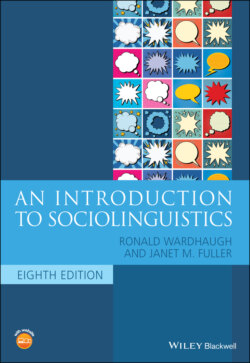Читать книгу An Introduction to Sociolinguistics - Ronald Wardhaugh, Janet M. Fuller - Страница 59
Societal aspects of AAVE use
ОглавлениеRecent research on AAVE addresses its role in society along with the structural variation and change. Work on the role of AAVE in education has been of paramount importance (see Rickford et al. 2012), and the role of nonstandardized vernaculars and minoritized languages in schooling is a topic we will return to in chapter 12. Recent research has focused on both the importance of the home language for children in terms of their social identities and development as well as ways of integrating the home language into instruction in order to foster both learning and community building.
Other lines of research investigate the use of AAVE in various other institutions such as churches (DeBose 2015) and courtrooms (Rickford and King 2016; Slobe 2016), again addressing issues of community and social network as well as inequalities and identities.
The use of AAVE in the media has also become an important line of research, both because the use of the dialect in this public space has increased and because sociolinguistics are increasingly tuned in to the importance of all types of media use as part of our linguistic performances. These studies look at features of AAVE and how they are used in public performances such as hip‐hop music (Cutler 2008, 2010) or Twitter (Jones 2015). The occurrence of Mock AAVE (Smokoski 2016) or what has been called CRAAVE (cross‐race African American Vernacular English) by Bucholtz (1999) is also addressed, showing that AAVE is used to construct specific types of identities, drawing on essentialized ideas about violent and physically tough Black masculinity, as in Bucholtz’s work, or Black women as ‘fierce’ and ‘sassy,’ as in a study on the use of AAVE by gay British men (Ilbury 2020). As we will discuss further in chapter 7, the use of particular linguistic features is often part of stances and the construction of identities in interaction.
This brief overview of research on AAVE has raised two broad issues that we will continue to deal with throughout this text. First, language varieties are often associated with particular social groups and as such are used to construct the social identities of speakers. Second, these associations are often essentialized and used to discriminate. In the following section, we will look at the processes through which linguistic features acquire social meanings.
